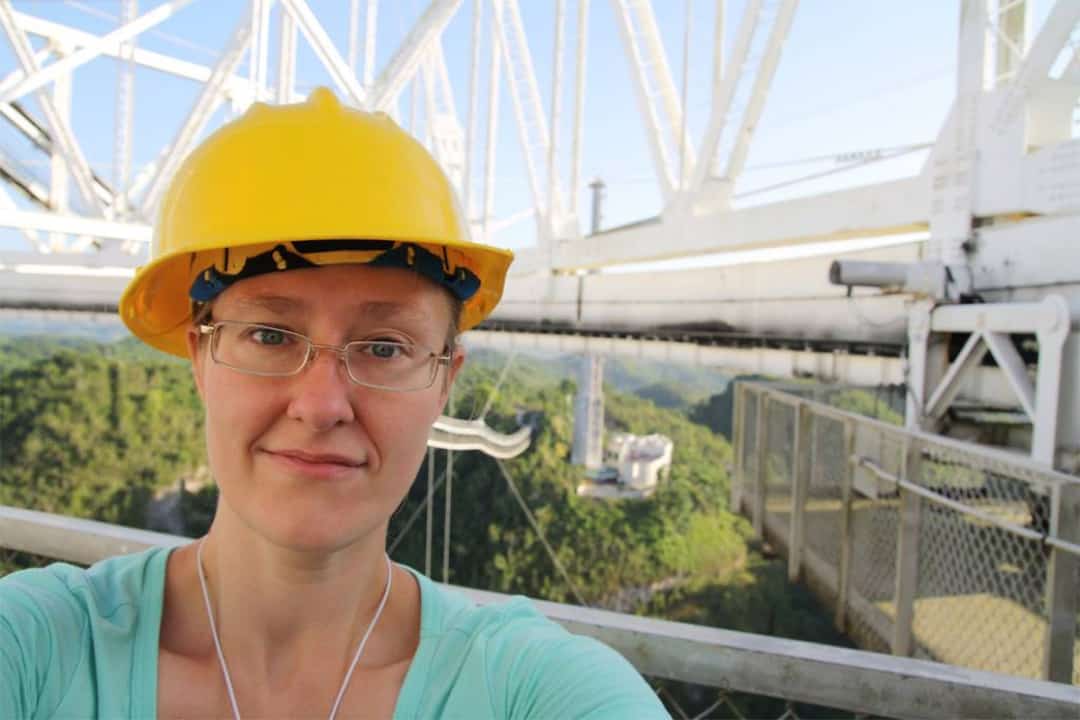A map of the night sky is usually made in two dimensions, like a flat map of the earth. And just like how two-dimensional maps often cause distortions — such as when they make Antarctica appear larger than it actually is — maps of the night sky face the same distortion problems.
Most importantly, the sky has hidden depth caused by the extreme variations in the distances between stars on the same map. For example, the star Bellatrix in the constellation Orion is 250 light years away from us, while the star Alnilam, also in Orion, is roughly 1,976 light years away from us. Determining distance is a problem in astronomy, especially when talking about large structures such as gas clouds that overlap each other.
The North Polar Spur
One large structure that has been difficult to map is the North Polar Spur (NPS) — a collection of large structures made out of gas particles and a magnetic field that seems to stick out from the galactic plane of the Milky Way, but is not visible to the naked eye. Instead, it’s only perceivable through radio waves.
From the early ages of radio astronomy, scientists have investigated questions about whether the NPS is a gigantic structure in the center of the galaxy or a smaller but closer line of charged gas bursting from a nearby area. One theory that new research now supports is that the NPS might even be in the ‘Local Arm’ — the same part of the galaxy as our solar system.
A recent paper by Dunlap Institute for Astronomy & Astrophysics research associate Jennifer West presents an incredibly simple model of the NPS and other spurs — settling the debate for now.
Same data, different perspective
West studies magnetic fields in our galaxy with survey data from radio telescopes. “We’re trying to understand three-dimensional space,” she explained in an interview with The Varsity. “[But] everything we get from the vast universe is projected onto our two-dimensional sky.”
She has thought about the spurs for years, and gradually accumulated evidence for this paper. After analyzing existing radio data and papers, West concluded that the NPS and the Fan Region — a similar spur to the NPS, previously thought to be a separate structure — must reside in the Local Arm. Once they are located more precisely in space, scientists could have an easier time deducing their shape. The final shape of the connected spurs can be described as “tunnel-like,” although the tunnel is, in fact, a magnetic field.
This the first time that multiple spurs have been modelled together.
From two dimensions to three
Turning two-dimensional images into three-dimensional models is much harder than the other way around, so West ran three-dimensional models on her desktop computer at Dunlap to generate something that looked like the radio sky map. “It’s more about changing our thinking than using a fancy computer,” she noted.
In the most basic simulation, there are eight parallel lines that make up a tube structure — a structure similar to xylem in celery — that stretches into infinity. The camera is placed in the middle of the tube, equidistant from every line. Then the camera starts mapping the ‘sky’ like a full radio survey.
With a more fine-tuned model, a recognizable map of the sky emerges. West’s model described a shape that looked like the observed shape of the NPS, strongly indicating that her model was correct.
This paper’s press release has been republished on popular science websites such as Futurism. West has received a flurry of emails about the paper, and spoke fondly of the public attention. “The excitement and the enthusiasm and the interest [is] really great to see,” she said.
Space objects off the visible light spectrum, such as the NPS, may not be immediately useful or understandable to non-scientists on Earth. However, the beauty of a simple computer model and the importance of not taking maps at face value cannot be underestimated while discovering something new about our universe.


